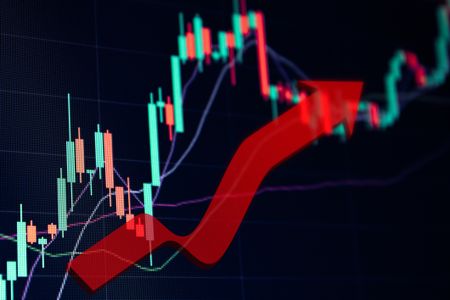Best Closed-End Funds (CEFs) to Buy Now
The best closed-end funds will significantly boost your portfolio income and allow you to buy their underlying stocks and bonds at a discount.


If someone offered to sell you a dollar for 90 cents . . . well, you'd probably think it was too good to be true. Yet these are exactly the kinds of opportunities that arise in the market's best closed-end funds (CEFs).
CEFs are a type of investment fund, and in fact, they are older than mutual funds. The very first closed-end fund was launched in 1893 – more than 30 years before the first traditional mutual funds (like those you might find in your 401(k) plan) were created.
As with their mutual fund cousins, CEFs are pooled investment vehicles that hold portfolios of stocks, bonds or other assets. But that's where the similarities stop.
Mutual funds are open-ended. When you want to invest, you or your broker sends cash to the fund, and the manager takes that fresh cash and uses it to buy assets. When you want to sell, the manager will sell a small amount of assets to cash you out. Money is always coming and going, and there's no hypothetical limit to the amount of new money a popular fund can take in and invest.
Closed-end funds are different. CEFs have initial public offerings (IPOs) like stocks, and there is a fixed number of shares that then trade on the stock market. If you want to buy shares, you buy them the same way you'd buy a stock.
And here's where the fun starts. CEF prices are set by the market the same way a share of Apple (AAPL) or Amazon.com (AMZN) would be, but that price can vary wildly from the value of the assets the fund holds. It's not uncommon to see CEFs trading at a premium to the value of the assets they own. But just as you'd never pay $1.10 for a dollar, you're generally better off avoiding CEFs trading a premium.
Discounts, however, are another story. Closed-end funds often sell at massive discounts to net asset value (NAV). In these cases, they're effectively worth more dead than alive!
Another nice aspect of CEFs is that, unlike mutual funds, they can use debt leverage to juice their returns. That same leverage also allows closed-end funds to sport some of the highest yields you're likely to find.
Today, we're going to take a look at some of the best CEFs on the market. Each of these funds trades at a reasonable discount to NAV and offers a yield that's at least competitive, if not downright extravagant.
Data is as of November 24. Distribution rate is an annualized reflection of the most recent payout and is a standard measure for CEFs. Distributions can be a combination of dividends, interest income, realized capital gains and return of capital.

Nuveen Real Estate Income Fund
- Market value: $284.0 million
- Distribution rate: 7.2%
- Discount to NAV: -4.3%
- Expenses: 3.64%*
It's been a rough stretch for real estate investment trusts (REITs). Because REITs have always had a major emphasis on income, investors came to view them as a bond substitute over the past two decades. But when bond yields surged in 2023 – and bond prices collapsed – REIT prices also fell in sympathy.
But now that prices in the sector have reset, investors have a chance to buy quality real estate assets on the cheap. And there's an inflation angle as well. Land and building prices tend to at least keep pace with inflation over time, and commercial rental contracts will generally have rent escalators that will rise.
REITs are a fine way to get exposure to real estate. But why pay retail for them if you don't have to?
The Nuveen Real Estate Income Fund (JRS, $7.67) is one of the best closed-end funds that invests in REITs. It owns essentially the same collection of REITs you'd expect to find in any mutual fund or exchange-traded fund (ETF), such as logistics REIT Prologis (PLD), data center REIT Equinix (EQIX) or self-storage operator Public Storage (PSA), but it has the added benefit of owning them at a discount.
At current prices, JRS trades at a 4.2% discount to NAV, which is wide given this CEF's history. It also yields a very juicy 1.5%.
The Fed might be successful in bringing inflation to heel. Or we might see several more quarters of sticky inflation. Only time will tell. But either way, it makes sense to own a little real estate, and JRS is a smart way to do so.
*Includes 1.21% in advisor fees.

Nuveen Credit Strategies Income Fund
- Market value: $801.5 million
- Distribution rate: 11.1%
- Discount to NAV: -1.9%
- Expenses: 5.48%*
We may get a recession at some point in the next 12 months, though any slowdown is likely to be fairly shallow. That makes the Nuveen Credit Strategies Income Fund (JQC, $5.85) a solid play. JQC invests in floating-rate loans, which benefited from the Federal Reserve's interest rate hikes. The fund accepts a fair amount of credit risk, however, as it owns a portfolio of senior-secured and second-lien loans made to companies that are mostly below investment grade.
The fund manages this risk by holding a first-lien position in 70% of the portfolio. This means that if anything goes sideways, JQC is first in line to get paid, and its claims are backed by real collateral. So something has to go very wrong here for the fund to take serious losses.
The 30% in second-lien loans are riskier, of course, as the owner of a second lien generally gets whatever is left over after the senior creditors have been paid. But, again, this is only 30% of the portfolio, and the fund is well diversified.
The potential returns here look juicy, which is why JQC is one of the best closed-end funds to buy. The Nuveen Credit Strategies Income Fund trades at a 1.8% discount to NAV. As market sentiment improves, that discount should shrink, adding additional returns to the fat 10.3% yield.
* Includes a 1.3% management fee.

Tortoise Sustainable and Social Impact Term Fund
- Market value: $199.6 million
- Distribution rate: 8.6%
- Discount to NAV: -15.7%
- Expenses: 2.67%*
The discount to NAV is one of the most appealing aspects of closed-end funds. Who wouldn't want to buy the whole for less than the sum of the parts?
The problem, of course, is that cheap CEFs can stay cheap forever in the absence of a catalyst to close the discount to NAV. And herein lies the appeal of term funds.
Term funds are CEFs with a shelf life. They are designed to liquidate at NAV at a specific date in the future. So if you buy one at a discount and hold until liquidation, you should benefit handsomely as that discount narrows.
As a case in point, consider the Tortoise Sustainable and Social Impact Term Fund (TEAF, $12.47), which invests primarily in an eclectic mixture of traditional and alternative energy across both the public and private sectors.
TEAF's quirkiness has contributed to it perpetually trading at a deep discount to NAV. Investors in traditional energy stocks tend to overlook anything with "sustainable" in the name, and renewable energy investors tend to be put off by the fund's holdings of pipelines.
Perhaps unsurprisingly, this orphan status has contributed to the fund having a discount to NAV of almost 16%.
But here's the fun part — and what makes TEAF one of the best closed-end funds to own: The CEF is designed to liquidate in 2031. So anyone buying today can enjoy the 8.7% dividend while waiting for the discount to close. Not too shabby!
* Includes 1.54% in advisor fees.

ClearBridge Energy Midstream Opportunity Fund
- Market value: $998.6 million
- Distribution rate: 7.9%
- Discount to NAV: -9.3%
- Expenses: 4.68%*
The ClearBridge Energy Midstream Opportunity Fund (EMO, $40.59). Like CEM, EMO invests primarily in a portfolio of oil and gas pipeline stocks.
Most pipeline stocks are organized as master limited partnerships (MLPs). These can be something of a chore to own in that they tend to make your tax returns more complicated. Rather than simply show up on your normal broker 1099-B or 1099-Div, MLPs come with complicated K1 tax statements.
Adding insult to injury, you generally shouldn't hold them in traditional IRA accounts because they often generate unrelated business taxable income.
Well, as a closed-end fund, ClearBridge Energy Midstream Opportunity doesn't have these issues. EMO allows you to get access to some of the biggest and best names in the MLP space without all the irritating tax complications. A few of its biggest holdings are solid pipeline firms Energy Transfer (ET), Enterprise Products Partners (EPD) and MPLX (MPLX).
Another reason EMO is on this list of best closed-end funds: At current prices, it trades at a notable 9.3% discount to NAV. It also yields a very competitive 6.0%.
* Includes 0.7% in management fees.

Sprott Physical Gold Trust
- Market value: $8.8 billion
- Distribution rate: N/A
- Discount to NAV: -0.5%
- Expenses: 0.41%*
Gold has been hot this year, and the precious metal could get a bigger lift as global central banks continue cutting interest rates.
One way to play this is via the Sprott Physical Gold Trust (PHYS, $20.84). Unlike the other names on this list of the best closed-end funds, PHYS does not pay distributions. It doesn't really "do" anything. It simply holds a passive portfolio of gold bullion.
PHYS is not the only way to play gold, of course. The SPDR Gold Shares (GLD) offers exposure to the yellow metal in an ETF wrapper, for example. But PHYS, because it is a closed-end fund, can and does often trade at a discount to net asset value. Today, that discount is 0.5%. So via PHYS, you can buy gold at a modest discount to market prices.
* Includes one-twelfth of 0.35% of the value of PHYS’s net assets.

Eaton Vance Tax-Advantaged Global Dividend Income Fund
- Market value: $1.6 billion
- Distribution rate: 8.2%
- Discount to NAV: -8.1%
- Expenses: 2.70%*
If you like the idea of getting access to international stocks but still want to maintain at least a little exposure to U.S. stocks as well, a global fund like the Eaton Vance Tax-Advantaged Global Dividend Income Fund (ETG, $18.96) is a solid choice.
ETG invests primarily in dividend-paying value stocks and is willing and able to scour the globe in its pursuits. Nearly half the portfolio is allocated to foreign equities, with exposure to the United Kingdom, France and Germany, as well as markets in greater Asia, such as Taiwan and India.
The vast majority of the portfolio, at roughly 85%, is invested in common stocks. But the fund also has exposure to preferred stock and bonds, as well as a few smaller positions in other assets.
At current prices, ETG trades at a 8.1% discount to net asset value and yields a very competitive 8.2%.
The discount to net asset value is noteworthy to investors seeking out the best closed-end funds because as recently as November 2022, ETG actually traded at a slight premium to net asset value.
* Includes 1.08% in management fees.

BlackRock Municipal 2030 Target Term Trust
- Market value: $1.6 billion
- Distribution rate: 2.7%
- Discount to NAV: -12.2%
- Expenses: 2.96%*
Muni-bond CEFs have the same problem that many equity CEFs have. They often trade at deep discounts to NAV and can persist like that for years, with nothing seeming to shake them out of that rut.
We already covered the Tortoise Sustainable and Social Impact Term Fund (TEAF), which has a liquidation date in 2031. Let's cap off this list of the best closed-end funds with another solid term fund: the BlackRock Municipal 2030 Target Term Trust (BTT, $21.08).
As you might gather from the name, the BlackRock fund is a municipal CEF that will liquidate in 2030. It targets a $25 net asset value at the end of its term, and the fund trades at a deep 12.2% discount to NAV. So, apart from the potential gains due to the underlying bonds rising in value and from the tax-free dividend, we should enjoy a nice kicker as the fund's share price approaches NAV at liquidation.
The CEF is also structured so that the underlying bonds it owns should be approaching maturity by 2030, further reducing the risk of price declines due to rising yields.
Investors should note, however, that the fund is powered by a high 34.4% in leverage. In a "normal" year, that acts as a return booster. But, as we saw in 2022, leverage can cut both ways, as losses can also be outsized. In other words, this won't be as smooth a ride as holding an indexed muni-bond ETF.
At current prices, BTT sports a yield of 2.6%. If you're in the 37% tax bracket, that translates to a tax-equivalent yield of around 4%.
You're not going to get wealthy on that, of course. But BTT is a good place to park cash for the rest of this decade to get a competitive, tax-free yield.
* Includes 0.61% in management fees.
Learn more about BTT at the BlackRock provider site.
Related content
Get Kiplinger Today newsletter — free
Profit and prosper with the best of Kiplinger's advice on investing, taxes, retirement, personal finance and much more. Delivered daily. Enter your email in the box and click Sign Me Up.

Charles Lewis Sizemore, CFA is the Chief Investment Officer of Sizemore Capital Management LLC, a registered investment advisor based in Dallas, Texas, where he specializes in dividend-focused portfolios and in building alternative allocations with minimal correlation to the stock market.
-
 The Rule of 1,000 Hours in Retirement
The Rule of 1,000 Hours in RetirementFor retirees, the rule of 1,000 hours brings intention and clarity to your day. Because time is the most valuable thing you can spend.
By Jacob Schroeder Published
-
 Little-Known Ways to Guard Your Retirement Income
Little-Known Ways to Guard Your Retirement IncomeIs your retirement income safe if stocks continue to plummet? Most retirees don't know these reliable options to limit their market exposure.
By Jacob Cornell Published
-
 Little-Known Ways to Guard Your Retirement Income
Little-Known Ways to Guard Your Retirement IncomeIs your retirement income safe if stocks continue to plummet? Most retirees don't know these reliable options to limit their market exposure.
By Jacob Cornell Published
-
 Three Warning Signs Your Investments Are (Needlessly) Too Risky
Three Warning Signs Your Investments Are (Needlessly) Too RiskyAll investments come with risk, but the secret is to take only enough risk to get you to your specific savings goals — and no more than that.
By Eric Roberge, Certified Financial Planner (CFP) and Investment Adviser Published
-
 His Employees Don't Work 'For' Him, But 'With' Him
His Employees Don't Work 'For' Him, But 'With' HimWhile it might not seem that way, there are indeed employers out there who value the relationships they have with their employees. Here's an example.
By H. Dennis Beaver, Esq. Published
-
 Stock Market Today: Trump Pushes Dow Into 2,600-Point Swing
Stock Market Today: Trump Pushes Dow Into 2,600-Point SwingTariffs and trade war weigh on prices across global financial markets, with little light at the end of the tunnel.
By David Dittman Published
-
 Reduce Your Retirement Tax Risk With the Three-Bucket Strategy
Reduce Your Retirement Tax Risk With the Three-Bucket StrategySplitting retirement funds into three buckets with distinct tax treatments can help you avoid a nasty tax bill down the line. Here's how the strategy works.
By Bryan S. Slovon, Investment Adviser Published
-
 Financial Fact vs Fiction: This Roth Conversion Myth Could Cost You
Financial Fact vs Fiction: This Roth Conversion Myth Could Cost YouWhile some 'golden rules' stay in style forever, the financial landscape is constantly evolving. Here are five common myths to revisit (with more on the way).
By Scott McClatchey, CFP® Published
-
 Give Now or Leave an Inheritance? How to Balance the Options
Give Now or Leave an Inheritance? How to Balance the OptionsYou've saved enough money for retirement. But can you afford to give some to family or good causes — and when is best? These are the key points to consider.
By Deana Healy, CFP® Published
-
 Why Does the Fed Prefer PCE Over CPI?
Why Does the Fed Prefer PCE Over CPI?Inflation has been top of mind for lots of folks in recent years. Most of Wall Street follows the CPI but the Fed favors the PCE. Here's why.
By Charles Lewis Sizemore, CFA Published
